
Lamps are sold in packs of two, but it is not profitable to buy one such pack - Metro has strange pricing and when buying from three boxes, the price becomes 60% lower. For example, ordinary and filament candles of 470 lm cost 66 and 81 rubles apiece, if you buy them from six pieces (in the table below I will indicate exactly such prices).
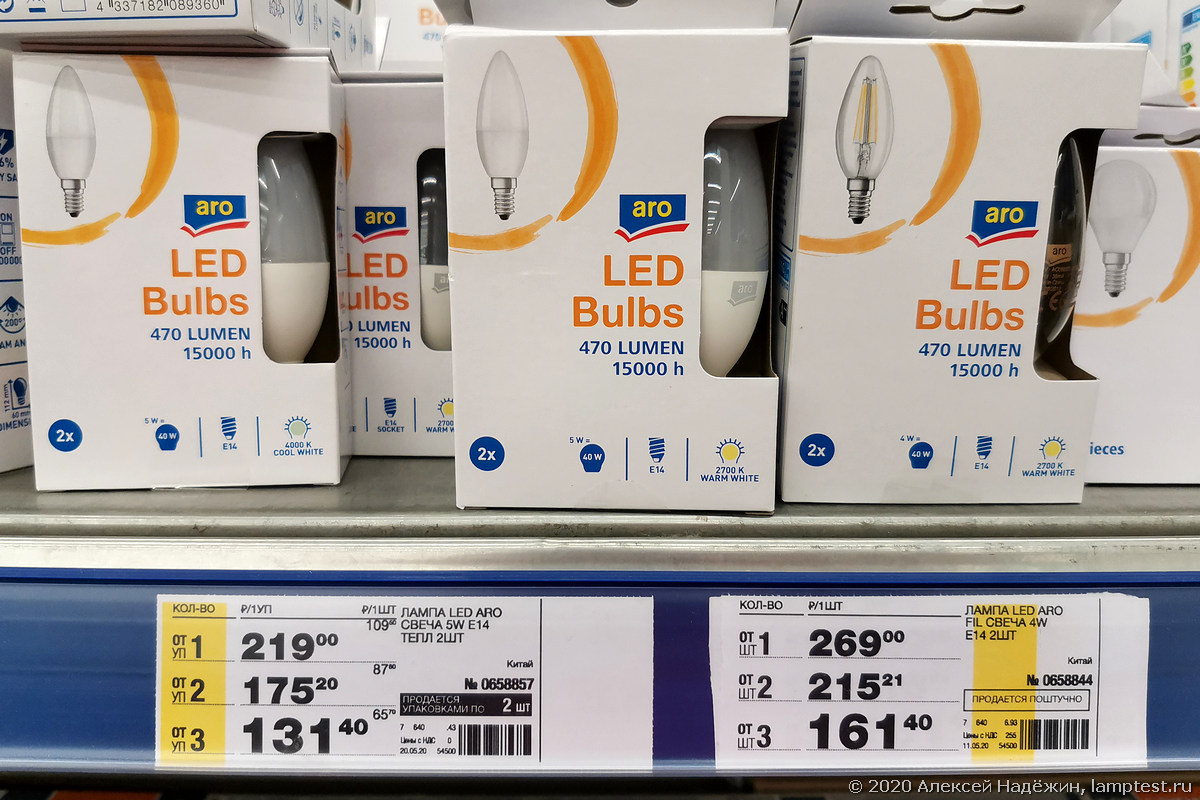
All lamps are labeled "Manufacturer Ledvance GmbH" on the packaging and Ledvance is known to own the OSRAM brand.
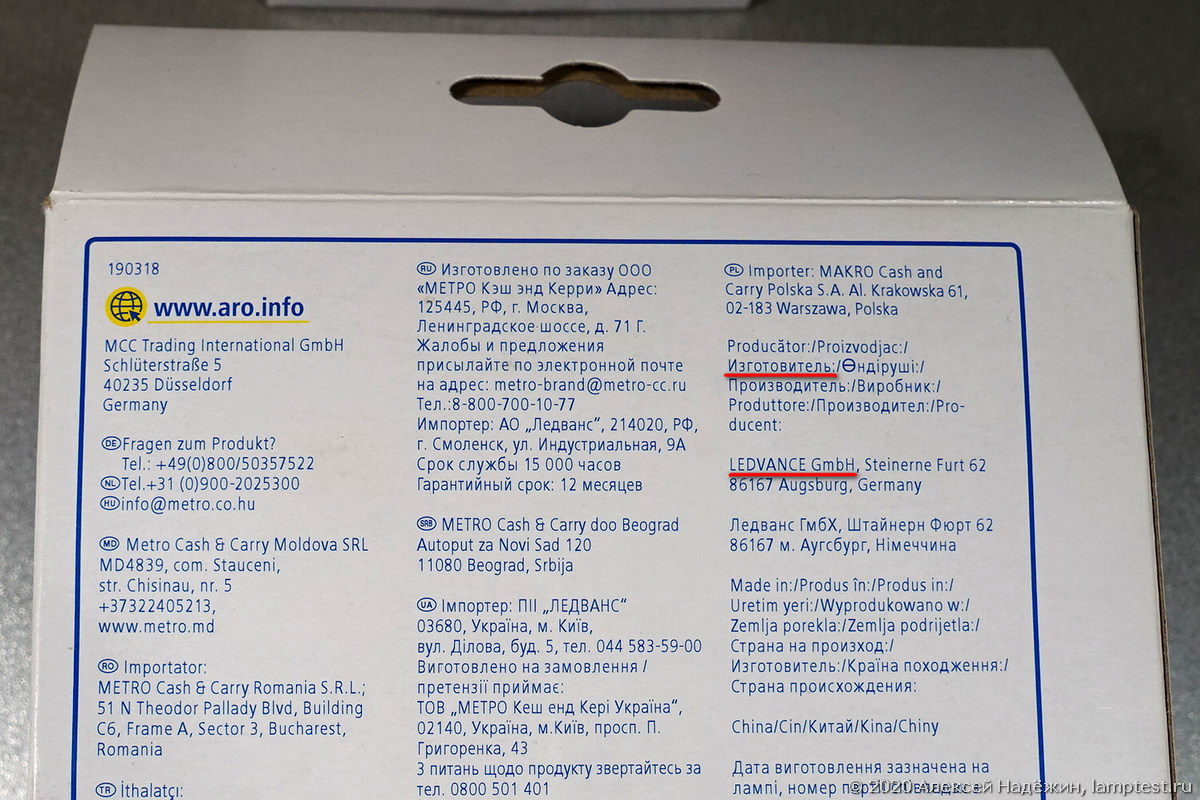
On the bulbs themselves there are typical "Osram" names of the letters AC and five digits, and "Osram" codes of Chinese factories, in this case KL.

The assortment of lamps in the Metro is rather strange: A60 pears 1521 lm, 806 lm (regular and matte filament), 470 lm, balls 470 lm and 250 lm, candles 470 lm (regular and filament) and 250 lm, and unexpectedly glass 12-volt lensed spots GU5.3 with a narrow angle of 35 degrees.
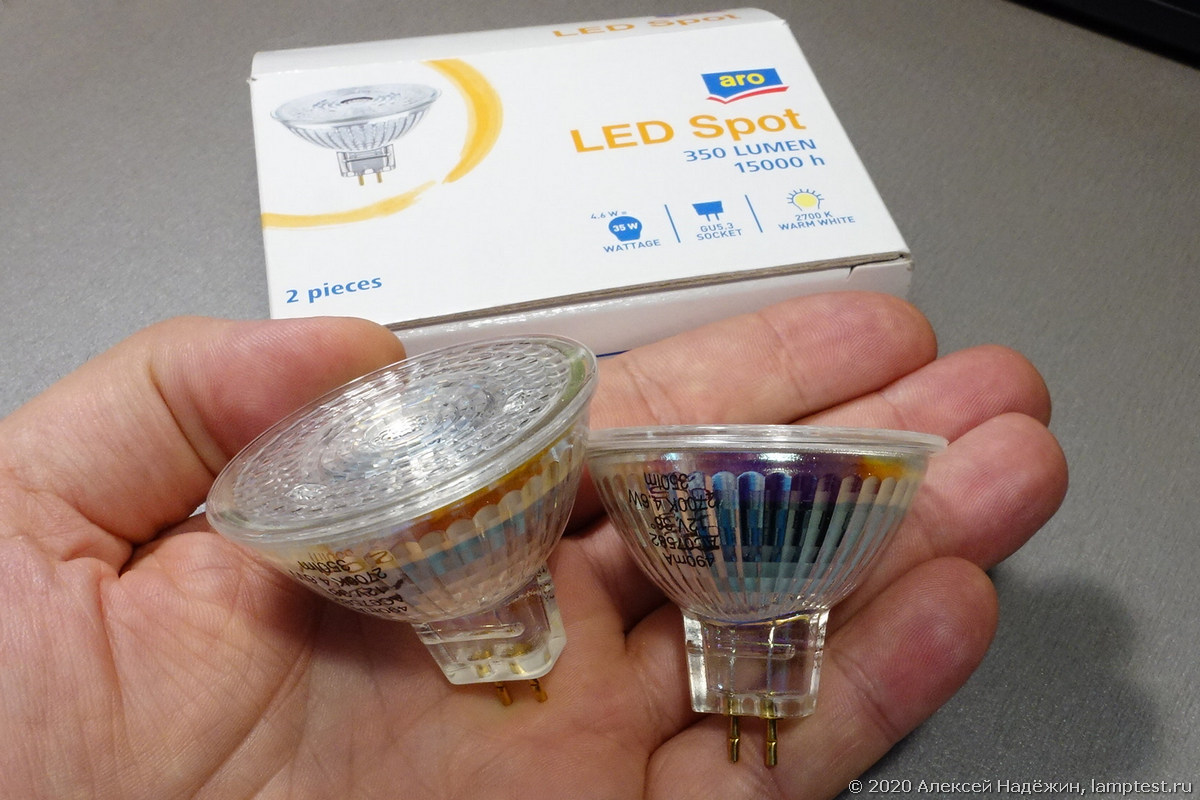
Another surprise is the matt 806 lumen filament pear lamp with warm light.
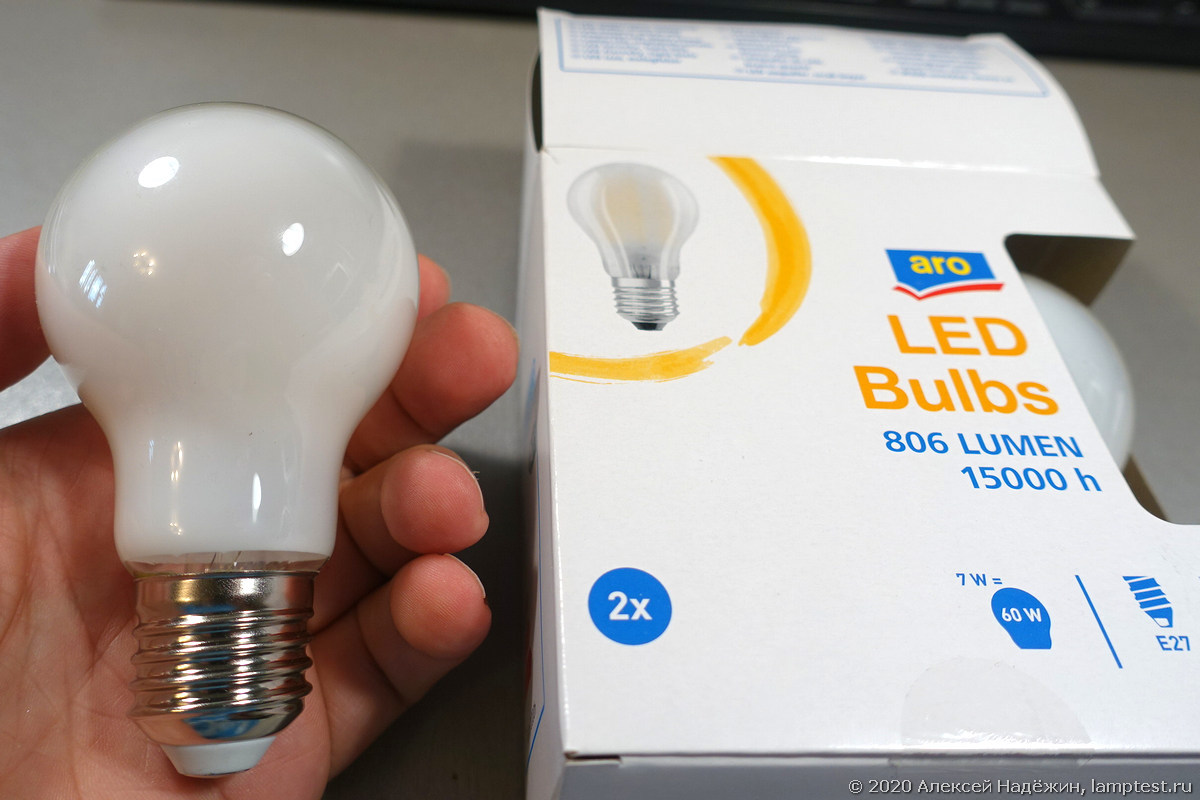
Many lamps are available with only warm or only neutral light.
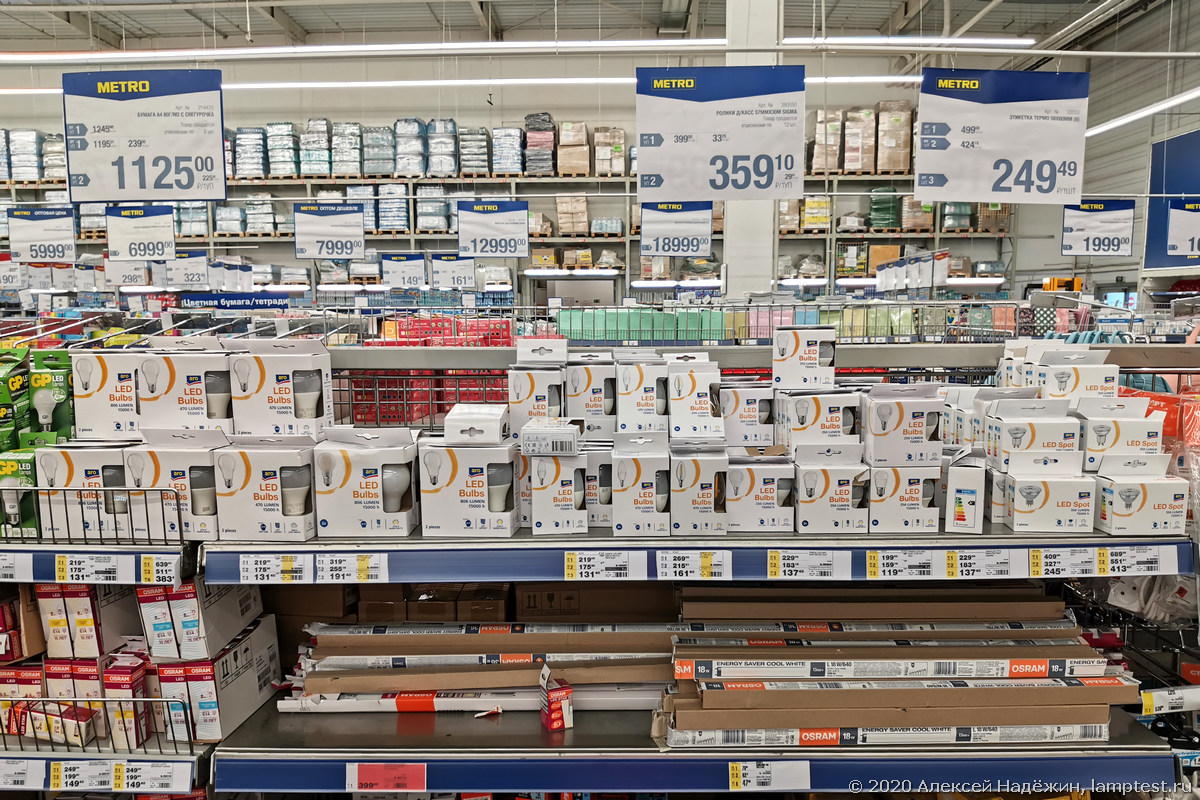
The warranty period for Aro lamps is 1 year (for OSRAM 2 years) and how the store will fulfill the warranty if one of the two lamps sold in the same box burns out, I do not know.
The names of lamps that I bought for the test, barcodes, prices, manufacturing plants and parameters indicated on the package.

The equivalent power for the lamps is indicated according to the European standard (60 W - 806 lm), but in fact the lamps shine significantly brighter than incandescent lamps, the wattage of which is indicated on the packaging.
I tested both copies of lamps from each box.
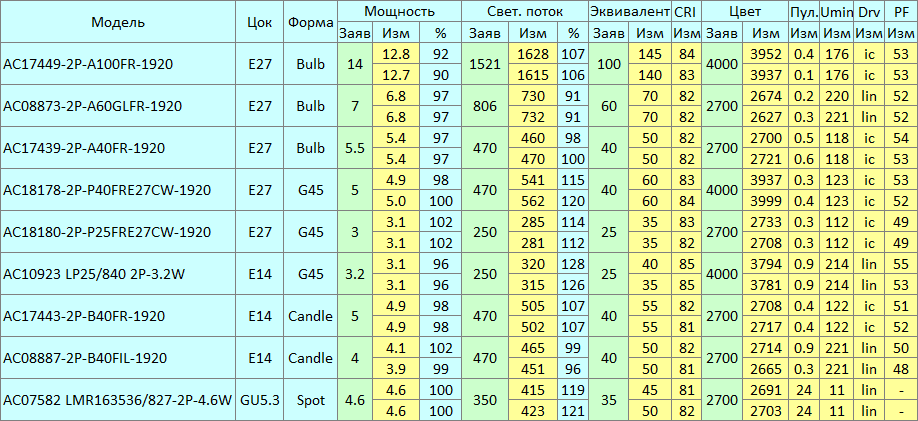
For all lamps, except for 12-volt spots, the measured ripple coefficient was below 0.9%, for spots it was 24%, and although such a ripple is invisible visually, it is better to connect them to a constant voltage source so that there is no ripple at all.
All lamps have a CRI (Ra) color rendering index of more than 81. This allows them to be recommended for use in residential premises.
In six models, the measured luminous flux turned out to be higher than the declared one by 6-28%, in three models it was lower than the declared one by 1-9%.
The measured power consumption differs from the declared one by no more than 10%.
The measured color temperature for all lamps is close to the declared one.
All lamps work correctly with switches that have an indicator. They do not light up or flash when the switch is off.
The equivalent power is indicated according to the European standard, but if we compare these lamps with ordinary incandescent lamps operating at a voltage of 220 V, lamps on which the equivalent of 40 W is indicated give the same amount of light as incandescent lamps 50-60 W. For the equivalent power of incandescent lamps for other lamps, see the table.
Most non-filament lamps are built on IC drivers, so that their brightness does not change when the supply voltage is significantly reduced. Filament lamps, G45 E14 “ball” and spots contain linear drivers, so their brightness changes when the mains voltage changes. Already when the mains voltage drops by 2-10%, the brightness drops by 5% of the nominal.
Before testing, the lamps were warmed up for 30 minutes.
Luminous flux, color temperature and color rendering index were measured using a two-meter integrating sphere and an Instrument Systems CAS 140 CT spectrometer, power consumption and power factor (Power Factor) with a Robiton PM2 instrument, and ripple coefficient with an Uprtek MK350D instrument. The minimum voltage level at which the luminous flux of the lamp decreased by no more than 5% of the nominal was measured using a Lamptest-1 device and a LATR Suntek TDGC2-0.5. In addition, a control measurement of power was made with a GW Instek GPM-8212 device, a control measurement of color temperature and color rendering index with an Uprtek MK350D device.
Judging by the tests, the Aro lamps are no different from the corresponding OSRAM models, they have the same "honest" parameters and are made at the same factories. At the same time, the price for many models is lower if you buy them from six pieces.
© 2020, Alexey Nadezhin